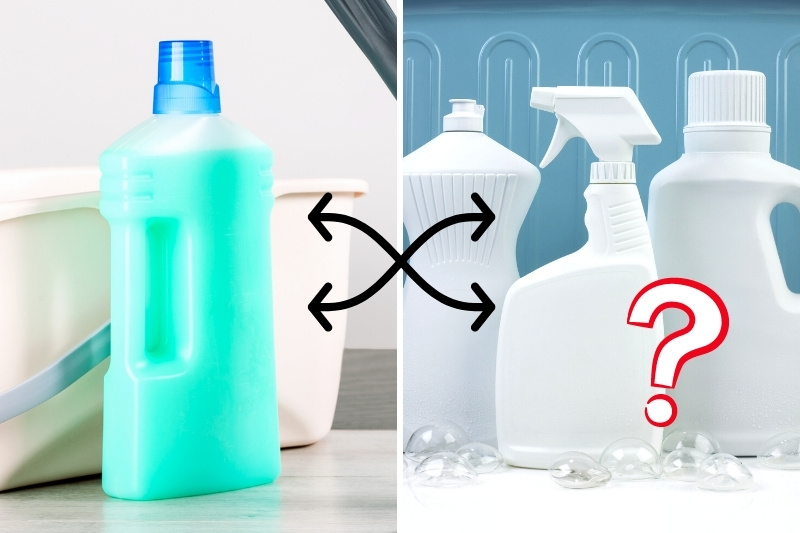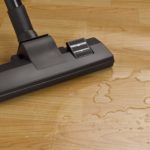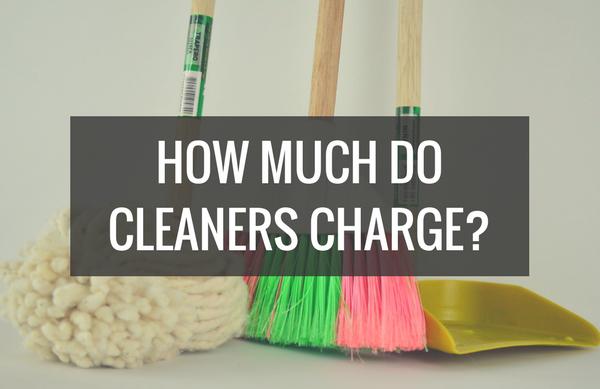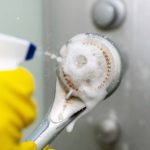If you’re about to tackle an enormous cleaning task, you might be thinking about mixing up a couple of cleaning products with a bit of bleach to speed up the job.
After all, bleach is one of the toughest disinfectants around. So, why wouldn’t you think about pairing it up with some of your other cleaning goodies to obliterate bacterial enemies from your house!
It might sound good in your head… Your bleach lined cocktail will pack some punch, it’ll make the cleaning work easier and the job will be done faster!
But, in reality, bleach is a strong chemical that shouldn’t be mixed with other household cleaners. This includes, toilet cleaners and multi-purpose cleaners.
However, it is possible for you to mix bleach with some laundry detergents to whiten laundry or to disinfect it, but you should always read the care label on your detergent’s packaging before trying this out.
And remember, in the case of your laundry, you do not need to use gallons of bleach to clean it – a teaspoon is often more than enough!
As a general rule, unless you’re a chemist, or you actually know how to mix chemicals together, you should only mix bleach with water – this is the safest option for you.
What Cleaners Can Safely Be Mixed with Bleach?
As you might know already, bleach is a strong chemical that shouldn’t be mixed with most cleaning products. So, here’s a recap of what products you can actually safely mix with bleach.
1. Water

So, water isn’t exactly a cleaning product per se, however, water is used throughout several cleaning processes because it’s a natural solvent that dissolves many forms of dirt and grime.
It just so happens that water can be mixed with bleach, and in most cases, users should dilute concentrated bleach with water to create a weaker, but still potent, water/bleach solution.
By watering down bleach, you can actually make a large measure of disinfectant cleaner for yourself, and this mixture can be used to clear germs from several areas in your house. In addition to this, by adding water to bleach you can actually make a fairly cheap cleaner too.
In general, you should mix one cup of bleach to four litres of water. Of course, you can alter these measurements slightly to suit a particular cleaning task.
Remember that even when bleach is watered down, you should still wear protective gear when handling the product, you should keep pets and kids away from your mixture, and you should open windows for ventilation. You are still working with bleach after all!
2. Laundry detergent
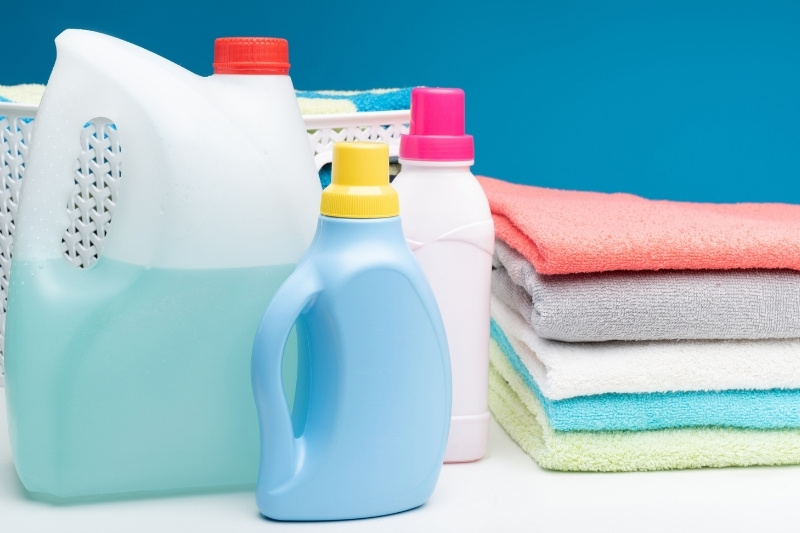
If you’re looking for a powerful mixture that’ll help remove toughened dirt from your laundry, whiten your white clothes, disinfect your washing and remove grotty stains, try mixing laundry detergent and bleach together.
Combining laundry detergent and bleach isn’t harmful, because some, but not all, detergents already have a type of bleach in them. So, by adding additional bleach, you’re just enhancing the overall cleaning power.
The most common types of bleach used in the laundry world are oxygen and chlorine bleach. And the main difference between the two is that chlorine bleach is much stronger, and can cause damage to delicate materials. Whereas, oxygen bleach is kinder to fabrics and can be used on coloured and white clothes.
Note: If you or a family member has sensitive skin, adding additional bleach to a wash isn’t a good idea.
Which detergents can you use with bleach?
You can potentially use any detergent with both oxygen and chlorine bleach, as long as you are careful. However, for a safer cleaning experience, opting for oxygen bleach is the better option, and performing bleach patch tests on your clothes before cleaning them is also beneficial.
Of course, if a detergent’s packaging clearly states that the item should not be mixed with other chemicals, including bleach, you should follow this advice!
It’s also worth noting that the two types of bleach mentioned above should be used in different situations and to clean various laundry.
Below, I’ll explain the best times to use and not to use both oxygen and chlorine bleach.
When to use oxygen bleach with your laundry detergent
Oxygen bleach is a much milder form of bleach than chlorine bleach. This makes it a better bleach to use when cleaning both white and coloured clothes.
However, it’s worth keeping in mind that oxygen bleach is still bleach. So, when it’s used in high quantities, it can still damage your clothes or dull your coloured clothes.
Before using oxygen bleach, you should check all the labels on your clothes to make sure they are okay to come into contact with bleach.
Some clothes, but not many, use dyes that disintegrate when exposed to high concentrations of oxygen bleach. So, it’s important to use a colour safe oxygen bleach when laundering such clothes.
To be safe, you should do a patch test on your clothes before using oxygen bleach on them. To do this, you should test a little bit of bleach on the inside of one of the garment’s hems, then wait 24 hours. If the colour of the item is unaffected by the bleach, the bleach is safe to use.
Also, keep in mind that many forms of laundry detergent, such as Persil Handwash Washing Powder, Vanish Fabric Stain Remover, and Ecover Laundry Bleach, already use oxygen bleach, so there is no need to add more bleach to the dirty laundry anyway.
When to use chlorine bleach with your laundry detergent
Chlorine bleach is a more potent form of bleach than oxygen bleach. For that reason, it should be used with caution.
Chlorine bleach will disintegrate most forms of colour dye, so if you wash coloured clothes with chlorine bleach, they will come out looking dull.
On the flipside, chlorine bleach, when used in small quantities, is great at reviving dull white laundry, like your white shirts, socks, and white trousers, for example.
However, you should still be careful when using chlorine bleach with white clothes, because the bleach can be so strong that it can start to eat away at the material’s fibres.
Some fibre types, such as polyester ones, can break down after being repeatedly exposed to strong chlorine bleach. So, once again, you need to use this bleach with caution.
In addition to this, before you work with chlorine bleach, you will need to check all the labels on your clothes to see if they’re okay to be bleached.
Some items may clearly state that they should not be washed using any kind of bleach. If this is the case, you should discard the bleach immediately and look into other ways of treating these clothes.
And as with oxygen bleach, you should do a chlorine bleach patch test with your laundry. Simply place a little bit of chlorine bleach on the inside hem of a white piece of clothing, and wait 24 hours to see what happens. If the fabric seems ok after using the bleach, you are good to go.
Don’t forget to keep an eye out for fibre damage. The colour may be fine but the material may be feeling the effects of the powerful bleach.
3. Bicarbonate of soda
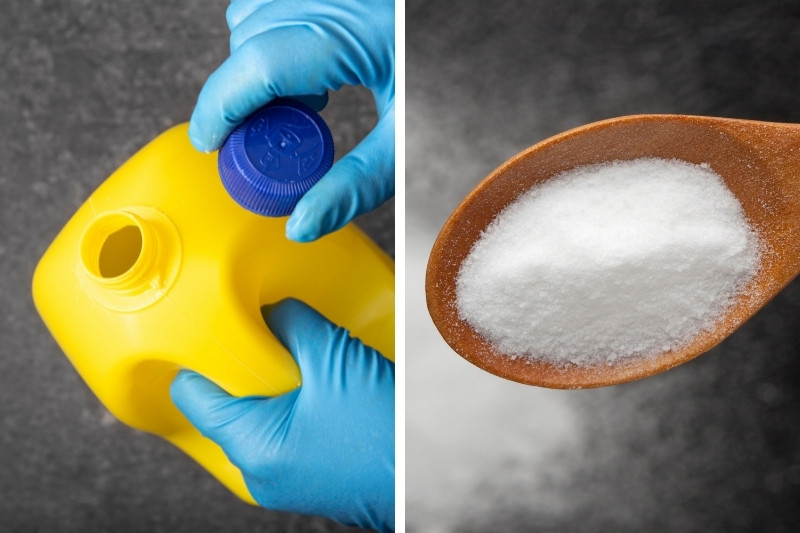
Both bicarbonate of soda and bleach are great at whitening clothes, so if you need something a little stronger to whiten your dulling laundry, look no further than this combination.
It is safe to mix the alkali bicarb with bleach because the mixture won’t give off any harmful gases, unlike other household goods.
In addition to being able to revive greying clothes, adding bicarbonate of soda to bleach also helps to neutralise the horrible bleach smell that the product gives off.
To use bicarbonate of soda and bleach to treat your laundry you just need to… add half a cup of bicarb and half a cup of bleach to your white laundry when it’s being washed.
This method might ruin coloured clothes, so you should be weary of trying this out on colourful items.
You can also create a bleach-come-bicarb paste too, which can be used to treat mould on walls. Although, you must always wear protective gear when trying this out, you need to do a patch test, you must have excellent ventilation in the room, and you should keep your children and pets out of the room when you’re applying the treatment.
For this method to work, you need to use at least a cup of bicarbonate of soda to a teaspoon of bleach. You should always have more bicarb than bleach in the pasty mixture!
Why Can’t You Mix Household Cleaners with Bleach?
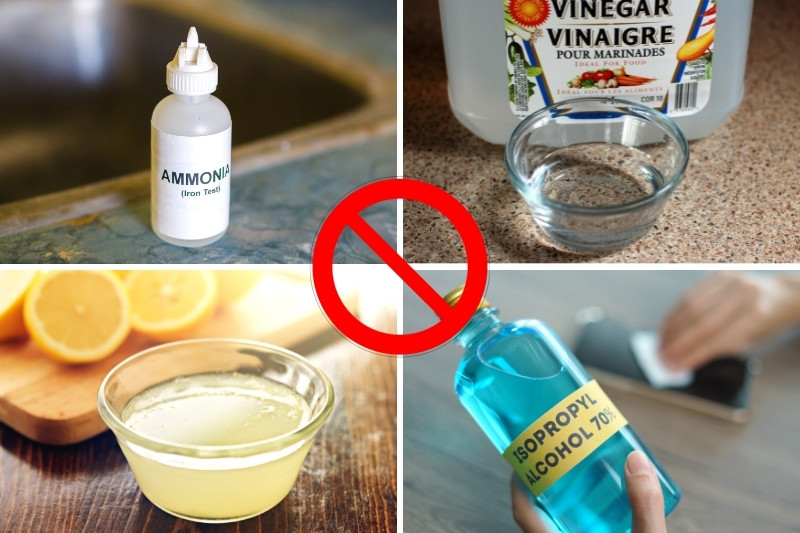
In short, mixing bleach with other cleaners typically results in some sort of toxic gas being created. And this gas can actually be fatal, if you’re exposed to too much of it.
Ammonia
If you combine bleach with ammonia, you will create a chloramine gas. This gas, if inhaled, can cause respiratory problems, like chest pain and breathing issues, and even death.
Acid-based products (lemon juice and vinegar)
On a similar note, if you mix bleach with an acid-based product, like a mild vinegar or lemon juice, a gas known as chlorine gas will be made. If inhaled, this can also cause respiratory problems, as well as watery eyes, a runny nose and coughing.
Rubbing alcohol
In addition to this, if you were to combine a little bleach with some rubbing alcohol, you’d end up with chloroform. And in case you were wondering, this is the stuff that baddies use in films to knock people out.
Of course, if you created this by-product at home, it probably wouldn’t be that strong, but you’d still feel its effects, namely eye irritation.
As you can see, if you blend bleach with a cleaner, whether it be ammonia-based, acid-based, or alcohol you’ll end up with a poisonous gas.
And given the fact that a lot of general household cleaners are often created with the ingredients listed above, it would be wise to avoid mixing them with bleach.
It also goes without saying that even if you’re outdoors, or you have the windows open, and you believe it to be safe to mix bleach with cleaning goods, you should still avoid doing it.
It doesn’t really matter where you are, or where you do the mixing, it’s still a big mistake and it’s not safe!
How to Avoid Mixing Bleach with Cleaners
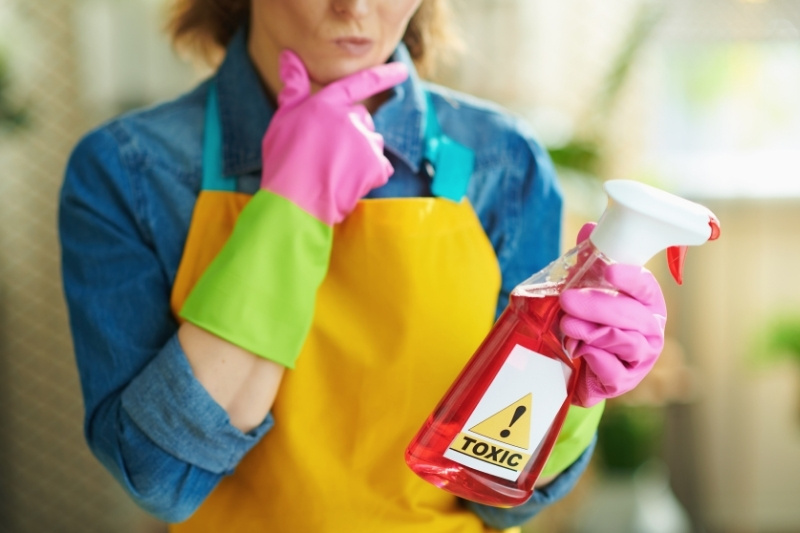
Here are a few tips to keep in mind when working with bleach:
- Always read the packaging on your cleaning goods.
- If you think something may contain an ingredient that could aggravate bleach, avoid using it with bleach.
- Only use bleach with water – this keeps things nice and simple for you.
- Add additional ingredients labels to your products, so you can instantly see what their makeup is, so you don’t go mixing the wrong goodies together.
- Keep your bleach away from your other cleaners – you can avoid the temptation to mix items this way.
- Don’t allow kids and pets to play with/around any kind of cleaning items.
- Keep in mind that bleach is typically considered a ‘disinfectant’, which makes it different to a ‘cleaner‘. So, use your household goods as they were intended to be used.
How To Safely Use Bleach

Bleach has bactericidal properties which makes it an excellent disinfectant, and it can also re-whiten dulling clothes. However, it’s still a fairly dangerous chemical to work with, so you should always do the following when working with bleach:
- Dilute bleach when working with it.
- Don’t mix bleach with other chemicals.
- Wear protective gear when working with bleach.
- Only use a small amount of bleach at a time.
- When working with bleach, check out how long you should leave the product on a surface for, before wiping it away.
What Other Cleaning Chemicals Shouldn’t Be Mixed Together?

Interestingly, there are actually several cleaning chemicals that shouldn’t be mixed together, aside from bleach.
These include, drain cleaners, vinegar mixes, and hydrogen peroxide combinations to name a few.
For more information, read our guide on what cleaning chemicals you should avoid mixing together.

Bethan has a passion for exploring, reading, cooking and gardening! When she’s not creating culinary delights for her family, she’s concocting potions to keep her house clean!
